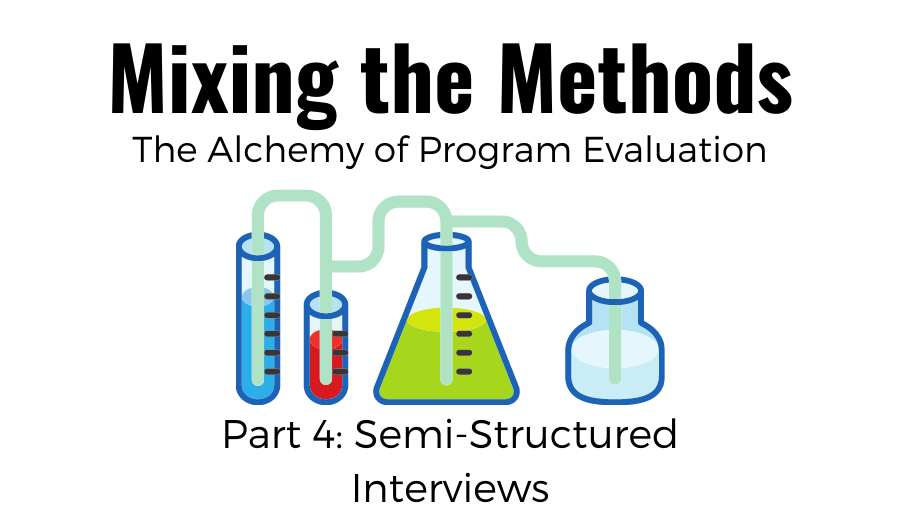April 26, 2021 •Teresa Kline


Welcome back to our blog series on program evaluation. If you haven’t already, check out last week’s post on focus groups. In this installment, we will be looking at semi-structured interviews.
Let’s imagine that you know from survey research that undergraduate women are more likely to switch their majors than undergraduate men, but you don’t know why. This type of research question is a great opportunity to use semi-structured interviews. These are guided conversations that are usually conducted one-on-one. They combine scripted questions (which make sure the interviewer covers all the research questions) and spontaneous follow-ups (to allow the interviewer to dig deeper into interesting responses) to ensure you get detailed, nuanced data.

To inform the project research questions, the analysis typically follows steps similar to those described in last week’s post on focus groups. We usually do a thematic analysis, in which we summarize the major themes uncovered and look for any patterns within or across groups.
The rich data gathered through semi-structured interviews is one of the reasons they’re an excellent choice for program evaluations. They provide researchers with the flexibility to raise additional topics and themes that might be missed in other data collection methods. They’re also a great way to incorporate the respondent voice into program evaluations by providing quotes—this is often an impactful way to drive a point home with your reader.
When paired with the other data collection tools described in this blog series, the data gathered through semi-structured interviews can lead to a more complete and more nuanced answer to the study research questions. (We look at how all these data collection methods work together in the final blog post of this series.)
Stay tuned for next week’s post on another of our favorite program evaluation methodologies—surveys.